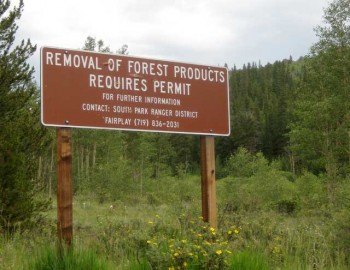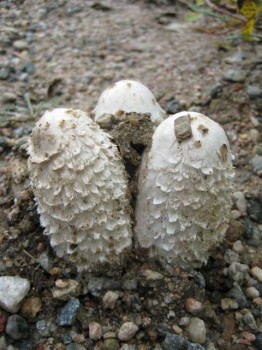
Note: I wrote this article at the behest of a Forest Service representative; it is re-posted here, plus subtitles, with permission of the Summit Daily News, which ran it on October 1.
Just as collecting firewood from the national forest for home use requires a permit, so too does foraging for fungus in the White River National Forest in and around Summit County, Colorado, including areas that were once part of the Arapahoe National Forest.
Fungi Foraging Permit Free but Required
“Mushroom gathering requires a personal use permit that we have been issuing for free at the Dillon Ranger District Office,” said Cary Green, timber management assistant for the East Zone White River National Forest. The limit is five gallons of mushrooms/day — the equivalent of one 5-gallon bucket or two grocery sacks — with a total season limit of 67 lbs. Other popular Forest Service permits include those for Christmas trees, boughs and transplants.
Commercial Mushrooming
Gathering mushrooms to sell, on the other hand, requires a commercial use permit in the White River National Forest. These are limited to designated areas and cost $100 for the season or $75 for 30 days (333 lbs max.), $60 for 21 days (200 lbs max.), $40 for 14 days (133 lbs max.), and $20 for 7 days (67 lbs max).
Regulations Vary
“Permit rules, costs and regulations vary across national forests,” Green said. “Each national forest has a forest product program. They should be similar for each ranger district on the forest, but there may be some exceptions.”
“While in fact the policy should be uniform across the region, up until recently mushroom collection in this area has been hit or miss,” said Pat Thrasher, public affairs officer for the White River National Forest. Since then, he explained, “we’ve seen a significant upturn in mushroom production. There are more people looking for mushrooms quite possibly because more people are finding mushrooms. Suffice it to say that folks who are planning on collecting mushrooms in the White River National Forest should get a personal use permit from (their local) ranger district.”
Other Food Forage
As far as other food forage is concerned — such as berries or leafy greens — neither the Dillon Ranger District nor the neighboring South Park Ranger District have specific permits available, though Green indicated that “personal use permits are product specific” and “any time an individual removes a product from the forest and takes it home for personal use, a permit is required.” For products not covered by existing permits, “a special permit may need to be issued,” Green said, “and calling in advance is recommended since certain individuals can only issue those permits.”
“One thing to keep in mind is that if an individual is foraging for the day and uses what they gather at camp that evening, then no permit is required,” he added. “For example, gathering firewood for a campfire while backpacking at a backcountry lake or gathering some berries or mushrooms to eat on the trail or cook over the campfire/stove while camping. This is considered incidental use,” he said.

Managing Forests
“Managing the forest products available on our federal lands is just a small part of making sure opportunities are available to utilize our natural resources,” Green concluded, “while making sure they are not taken advantage of or depleted at the same time.”
Collecting mushrooms, edibles, firewood and other forest gifts on private land is another story. These zones are up to the owners’ discretion — although if you want your fungus to fruit into the unforeseeable future, it is advisable not to collect every last mushroom you see on any one foraging mission, nor to pollute or otherwise destroy habitat.
Although the time for king boletes (Boletus edulis) may have passed, other edible mushrooms are still to be found in the shoulder season before the snow sticks, including short-stemmed slippery jacks (Suillus brevipes), shaggy manes (Coprinus comatus) and high-elevation oyster mushrooms (Pleurotus populinus), to name a few. The best time to look is one to four days (depending on species) after a good rain follows a warm spell.
INFO:
- Dillon Ranger District: (970) 468-5400 – 680 Blue River Parkway,Silverthorne,CO
- White River National Forest: (970) 945-2521 – 900 Grand Ave., Glenwood Springs, CO

Leave a Reply